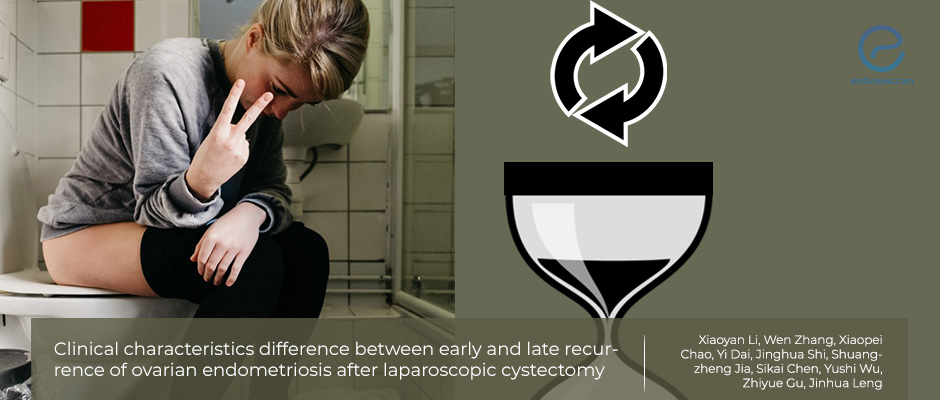Clinical characteristics linked to recurrence of ovarian endometrioma
Jul 24, 2020
Tenesmus tie-up to early recurrence of endometrioma
Key Points
Highlights:
- The presence of tenesmus before surgery is a potential indicator for the early recurrence of endometrioma.
- Paying attention to certain characteristics before the surgery might help to individualize the post-operation follow-up schedule.
Importance:
- Despite being the most common type of endometriosis, currently, there are no clinical characteristics that would allow clinicians to predict the recurrence time for ovarian endometriosis.
- This study provides a potential link between the presence of tenesmus before surgery to the early recurrence of endometrioma.
What’s done here?
- 358 patients of ovarian endometriosis underwent a laparoscopic excision of ovarian endometrioma were investigated.
- Using univariate and multivariate statistical analyses, clinical indicators for early and late endometrioma recurrence were investigated.
Key results:
- Patients who have tenesmus before the ovarian endometrioma surgery are likely to have an early recurrence.
Limitations of the study:
- The retrospective nature of this study may cause biases about patient characteristics.
- Lack of multicenter samples may be a limitation.
Lay Summary
Endometriosis affects 10-15% of women. Three types of endometriosis are peritoneal, ovarian, and deep infiltrating endometriosis. Ovarian endometriosis is the most common type of endometriosis with a high rate of recurrence.
Laparoscopy is the gold standard treatment for endometriosis and ovarian endometrioma. However, the recurrence rate following surgery is up to 50% even for patients who receive postoperative medication. The recurrence of endometrioma is 29–56% at 2 years and 43% at 5 years after laparoscopic surgery.
Knowing which patients are at higher risk for early recurrence would be important to individualize the follow-up and treatment plan after surgery. However, currently, there are no clinical characteristics that would allow clinicians to predict the recurrence time for ovarian endometriosis.
In this study, which is published in the "Archives of Gynecology and Obstetrics", Li et al., aimed to compare the risk factors and clinical indicators for early and late endometrioma recurrence. They collected information of 358 patients of ovarian endometriosis who underwent a laparoscopic excision of ovarian endometrioma performed at Peking Union Medical College Hospital.
The univariate and multivariate analyses showed that the presence of tenesmus, which is defined as a “painful spasm of the anal sphincter along with an urgent desire to defecate without the significant production of feces”, has a potential association with the early recurrence after surgery.
Thus, endometria patients presented with tenesmus before the surgery should be considered carefully when designing the follow-up schedule and post-operative treatment plan.
Research Source: https://pubmed.ncbi.nlm.nih.gov/32583208/
Ovarian endometriosis recurrence tenesmus laparoscopic cystectomy

